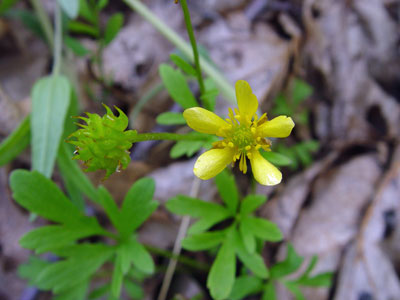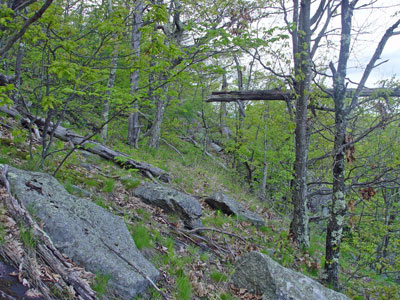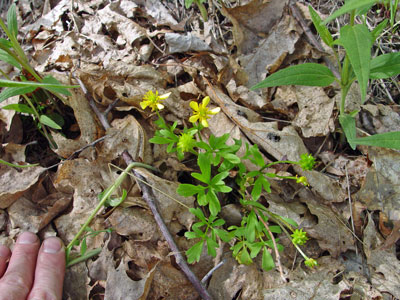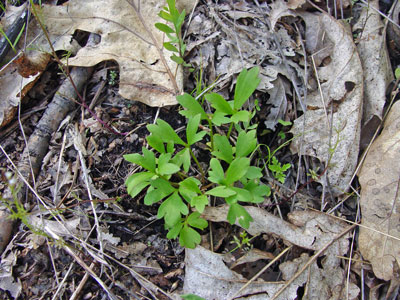DACF Home → Bureaus & Programs → Maine Natural Areas Program → Communities, Plants, and Animals → Rare Plants → Ranunculus fascicularis

Ranunculus fascicularis Muhl. ex Bigelow
Early Crowfoot
- State Rank: S1
- Global Rank: G5
- State Status: Threatened
Habitat: Thin soil in open woods or exposed hills and ledges (often calcareous). [Rocky summits and outcrops (non-forested, upland); Hardwood to mixed forest (forest, upland)]
Range: Ontario to Massachusetts, North Carolina, Wisconsin, Kansas and Texas.

Aids to Identification: Early crowfoot is one of many members of the genus Ranunculus found in Maine. Among buttercups, it is the earliest to flower, the showy yellow blossoms (with petals 5-7 mm long) resembling those of the more familiar species. Its leaves are pinnately compound, grow in a basal rosette, and are distinctively longer than wide, with very narrow, blunt lobes. The plant stands 15-30 cm high overall and grows as a perennial from roots that are often tuberous-thickened.
Ecological characteristics: Ecological relationships in Maine are not well known.

Phenology: Flowers April - May.
Family: Ranunculaceae
Synonyms: Ranunculus fascicularis Muhl. ex Bigelo var. apricus (Greene) Fern.
Known Distribution in Maine: This rare plant has been documented from a total of 2 town(s) in the following county(ies): Oxford, York.
Reason(s) for rarity: Natural scarcity of suitable (i.e. calcareous) habitat.

Conservation considerations: This plant is restricted statewide to southern Maine. Populations are vulnerable to conversion of their habitat to residential (or other) use. The plant typically grows in open rocky woods, suggesting that partial removal of the canopy may not be harmful to the population.